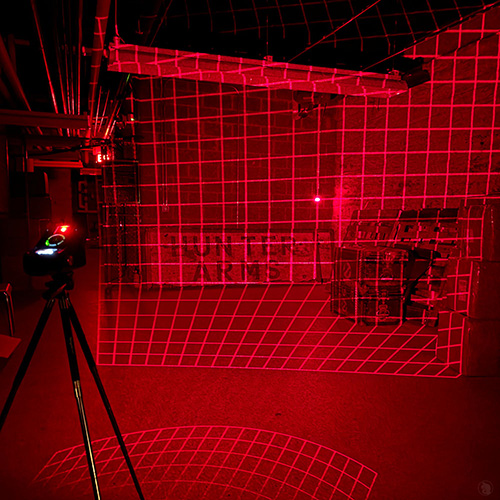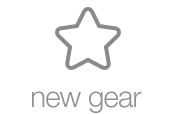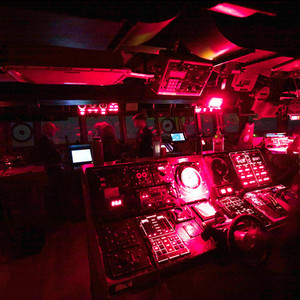Why is Red Light Best for Ghost Hunting and Low Light Tools?
Posted by GhostStop on Jun 14th 2024
At GhostStop, we have always used red color whenever possible. You'll even notice the choice of red in our logo and branding. Over the years, many people have asked us, "Why red?" There are numerous reasons why. But the primary one is, well... science!
The Science Behind Red Light for Night Vision in Ghost Hunting
When it comes to ghost hunting, maintaining your ability to see in low-light environments is crucial.

You know how stepping indoors from bright sunlight causes your eyes to struggle to adjust for a few minutes? How about when your ghost hunting buddy snaps a photo with the flash on. A sudden camera flash can momentarily blind you as your eyes reel from the abrupt burst of brightness, overwhelming your vision.
This happens because your pupils, having contracted to shield your eyes from the intense sunlight, need time to open up again and adapt to the dimmer indoor lighting.
Red light DOES NOT have this effect. But why?
In short, red light does not provoke such intense reactions from your eyes. Its gentler illumination allows you to maintain your vision without the temporary blindness or adjustment period, making it ideal for environments where quick and clear vision is essential, such as during ghost hunting investigations.
This is why at GhostStop, we prioritize using red light in our ghost hunting equipment. Red light not only enhances the effectiveness of our gear but also aids in preserving the natural night vision of the human eye, making it the ideal choice for nocturnal investigations. Let's delve into why red light is the best option for viewing instruments in the dark and how it benefits ghost hunting.
The Anatomy of Night Vision
To understand the advantages of red light, it's essential to grasp how human vision works in low-light conditions. The retina in our eyes contains two types of photoreceptor cells: rods and cones. Cones are responsible for color vision and function best in bright light, while rods are more sensitive to low light and enable us to see in the dark, though they do not detect color. In darkness, the rods take over, allowing us to discern shapes and movement but not fine details or colors.
Why is Red Lighting Best for Low Light Work?
Red light is advantageous for several reasons related to how our eyes adapt to darkness:
1. Minimal Impact on Night Vision
Red light primarily affects the cones, which are less sensitive in low-light conditions. Since the rods (responsible for night vision) are less sensitive to longer wavelengths of light, such as red, using red light causes minimal disruption to their function. This allows the eyes to remain adapted to the dark, preserving our ability to see in low-light environments.
2. Reduced Glare and Dazzle
Bright white, green, yellow or other colored lights can temporarily blind you by overstimulating both rods and cones, causing a delay while your eyes readjust to the dark. Red light, however, does not produce the same level of glare or dazzle, making it easier to return to low-light vision swiftly after using the light.
3. Prolonged Dark Adaptation
Exposure to white light can cause a phenomenon known as bleaching, where the photoreceptor cells in the retina are overstimulated, leading to a temporary loss of night vision. Red light does not bleach the photoreceptors, thereby allowing for a quicker and more sustained dark adaptation.
Applications in Ghost Hunting Equipment

In ghost hunting, the ability to perceive subtle anomalies in dimly lit or dark environments is critical. Here’s how red light facilitates this:
Enhancing Equipment Use
Ghost hunting often involves using various tools like EMF detectors, thermal cameras, and digital recorders. Red light provides sufficient illumination to operate and read these instruments without compromising the investigator’s night vision. This ensures continuous monitoring of the environment for potential paranormal activity without interruptions caused by the need to readjust to the dark after using a light.
Maintaining Awareness
Investigators need to remain aware of their surroundings while focusing on their equipment. Red light allows them to see their instruments and immediate surroundings without casting bright light that could interfere with their night vision or disturb any potential anomalies in the environment.
Preventing Startle Reflex
Sudden exposure to bright light can startle individuals and disrupt the focus required during ghost hunting. Red light, being less intense, helps maintain a calm and controlled environment both physically and mentally.
Other Uses of Red Light in Low-Light Environments
The benefits of red light are well recognized in various fields requiring night operations.
Navigation and Instrumentation: Red lights are commonly used in the cockpits of airplanes, the bridges of boats, and the control rooms of submarines. These environments need to maintain low-light conditions to allow for outside visibility and the ability to monitor multiple screens and instruments simultaneously without compromising night vision.
By using red lights on the instrument panels, a boat captain can be confident that looking up and out the window will will allow them to see surrounding vessels and obstructions - even at night.
Astronomy: Astronomers use red light to read star charts and adjust telescopes without losing their ability to see the night sky clearly.
Military Operations: Soldiers use red lights in tactical situations where maintaining night vision is crucial for operational success and safety.
Red light is the choice for all low light instrument work, including ghost hunting.
The use of red light in ghost hunting is more than just a preference, it's a strategic choice rooted in the science of human vision. By minimizing the disruption to our natural night vision, red light allows ghost hunters to operate their equipment effectively, stay aware of their environment, and maintain their ability to detect subtle changes and anomalies that may indicate paranormal activity.
At GhostStop, we incorporate red lights into our products to ensure that investigators have the best tools for their nocturnal explorations, supporting their quest to uncover the mysteries of the night. Using red light is a simple yet powerful way to enhance your ghost hunting experience, providing the optimal balance between illumination and dark adaptation.






